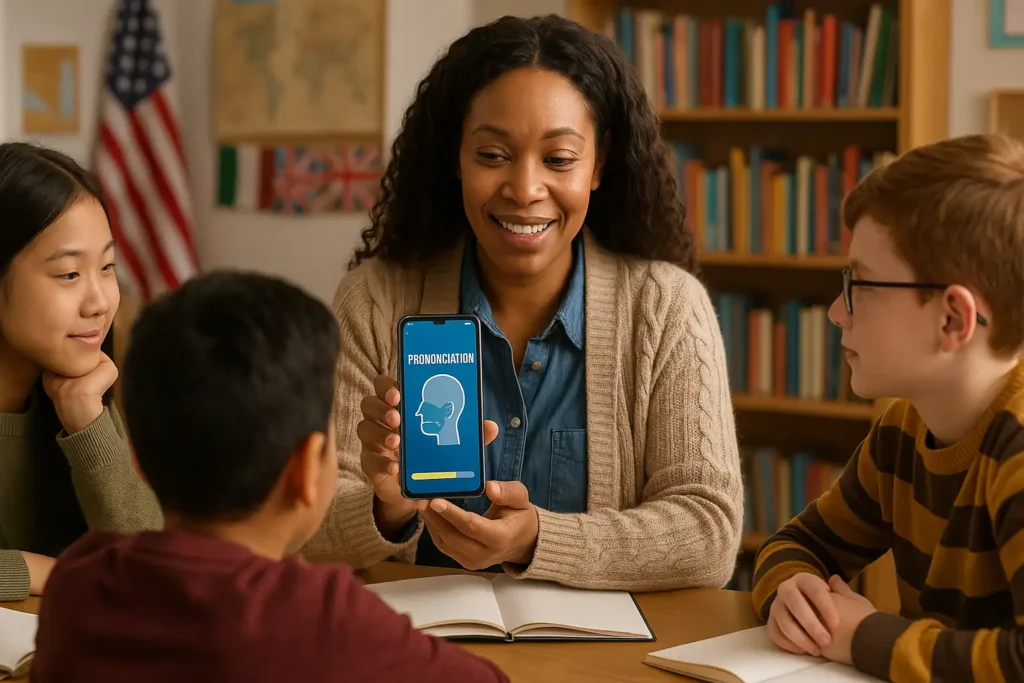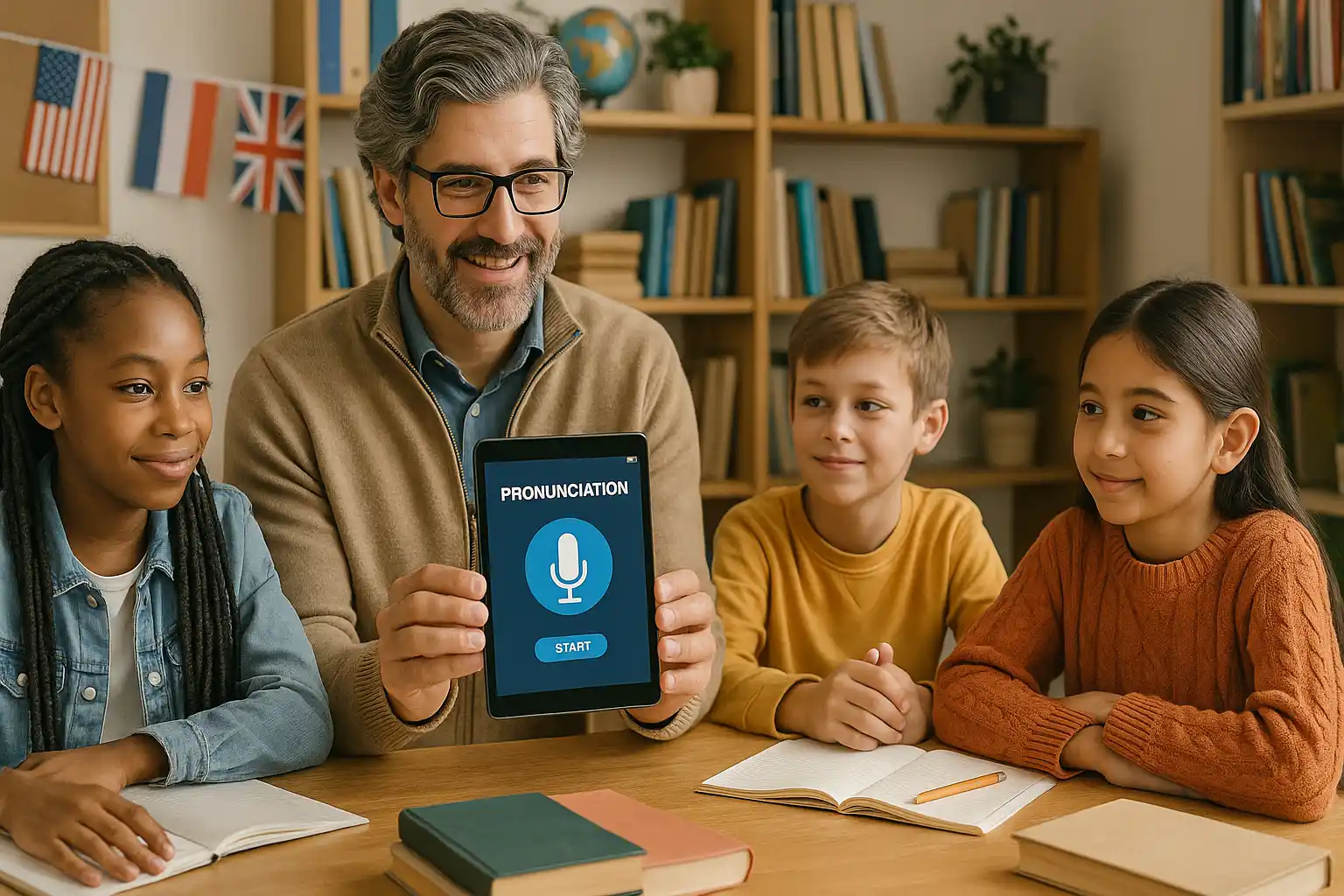Learning a new language can feel like climbing a mountain—exciting but full of challenges. Thankfully, Artificial Intelligence (AI) is becoming a powerful friend in this journey. Today, teachers and students have new tools that make language learning easier, faster, and even fun. Let’s explore how AI is helping in classrooms and at home to support better language learning.
Language Learning and AI: A Growing Connection
Language learning is one of the areas where AI has shown the most impact. From chatbots to smart apps, AI tools are changing the way we understand and use languages. In the past, students depended on textbooks and grammar drills. Today, they can speak with virtual assistants, get instant feedback, and hear correct pronunciation—all with the help of AI.
Why It Matters to Teachers and Students
Teachers often face large classrooms with students who learn at different speeds. Some students are shy to speak up. Others need more time to understand grammar. AI helps by giving personalized support to each student. It’s like having an extra tutor in the room, helping quietly and effectively.
How AI Tools Help With Language Learning
Smart Language Apps
Apps like Duolingo (https://www.duolingo.com/) and Babbel (https://www.babbel.com/) use AI to create personalized lessons. These apps track a student’s progress and adjust lessons based on what they know and struggle with. The result? Learning becomes more focused and effective.
Speech Recognition and Pronunciation
AI can now listen to a student speak and offer feedback. Tools like Google Translate and ELSA Speak (https://elsaspeak.com/) help learners improve pronunciation by comparing their speech to native speakers. It’s like having a language coach in your pocket.
Chatbots for Practice
Practicing with another person is one of the best ways to learn a language, but it’s not always possible. Chatbots are changing that. Platforms like Replika (https://replika.com/) let students have conversations in different languages. These bots never get tired and are always ready to talk.
Grammar and Writing Support
Tools like Grammarly (https://www.grammarly.com/) and QuillBot (https://quillbot.com/) use AI to correct grammar, suggest better words, and improve sentence structure. This helps students become better writers in the new language.
👉 Is AI in education making learning too easy? Discover how to balance technology and real learning with these practical tips for teachers and parents.
Benefits of AI in Language Learning

1. Personalized Learning
AI learns from each student’s pace and style. It knows if a student needs more help with vocabulary or grammar and adapts the lessons. This means no one gets left behind.
2. Learning Anytime, Anywhere
With mobile apps and online tools, students can learn at home, on the bus, or during lunch breaks. This flexibility is especially helpful for busy teachers and students with different schedules.
3. Confidence Building
Students often feel nervous speaking a new language. AI tools give them a safe space to practice without fear of judgment. As their skills grow, so does their confidence.
4. Real-Time Feedback
Instant feedback helps students correct mistakes early. Whether it’s a grammar error or a pronunciation issue, AI spots it and helps improve it immediately.
Challenges and How to Overcome Them
Access to Technology
Not all students have access to smartphones or the internet. Schools can help by offering shared devices or scheduling computer lab times.
Too Much Screen Time
It’s important to balance AI use with real-world conversations and writing. Teachers can guide students to use AI as a support, not a replacement.
Understanding Cultural Context
AI tools may not always understand local expressions or slang. Teachers can fill this gap by discussing cultural meanings in class.
Key Points About Language Learning
- AI tools offer personalized lessons based on student progress.
- Speech recognition apps improve pronunciation.
- Chatbots give students practice conversations.
- Writing tools like Grammarly help with grammar and sentence building.
- AI supports teachers by offering extra help for each student.
- Challenges include access and the need for cultural guidance.
- Real classrooms show positive results with AI integration.
Conclusion
AI is opening new doors for language learners. It turns difficult tasks into exciting challenges and gives students tools to grow at their own pace. For teachers, AI acts as a helpful assistant, offering support and saving time.
Language learning doesn’t have to be stressful or boring. With AI, it becomes a journey filled with discovery and confidence. Whether you’re a teacher or a student, embracing these tools can make a big difference.
What about you? Have you tried any AI language tools in your classroom or at home? Share your experience in the comments below!

